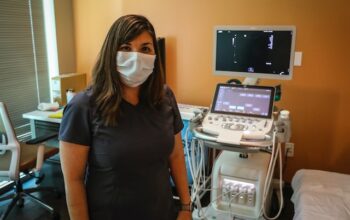A healthcare kiosk is an interactive touch screen device that allows patients to enter their name, medical history, and insurance information to queue up for their arrival or appointment time. Often connected to existing EMR software, kiosks can pull patient records automatically when patients check in. They can also take patients’ headshots and accept payments. All of these features, and more, make a healthcare kiosk an essential part of the patient experience.
Usability
This review examined the current use of computer-based health information kiosks in different environments. It focused on the types of kiosks and their features, how they were deployed, and the outcomes they were intended to achieve. This review also examined the potential benefits and challenges of healthcare kiosks. Several areas of interest are identified. These include hospital settings, primary care practices, community health centers, and church settings. Below are a few of the most common healthcare environments where healthcare kiosks | self-service kiosks for healthcare are being used.
Health kiosks are publicly accessible computing devices that offer online health services and information. These devices may be used by low-literacy users or individuals without internet access or to conduct teleconsultations. However, usability evaluations are difficult to accomplish because there are no validated questionnaires for assessing the usability of healthcare kiosks. In addition, because the future use of these devices is uncertain, researchers are seeking to define their current role and investigate the barriers to their deployment.
Acceptance
Using kiosks to provide health care services can reduce costs and increase efficiency. In addition, some kiosks use smart data to optimize resources. However, the technology isn’t appreciated enough in richer nations due to funding deficits and skepticism among healthcare bodies. Furthermore, some end users are not comfortable with kiosks taking the place of human interaction. However, the recent epidemics have forced the industry to become more innovative.
A study has assessed the effectiveness of healthcare kiosks in chronic disease management. This study found that healthcare kiosks improve access to primary healthcare services by providing a more convenient alternative to traditional medical offices. It also shows that these devices can help redistribute resources in medical care, which is crucial for managing complex conditions. In addition, healthcare kiosks automate the delivery of healthcare. By facilitating a faster process for patients, healthcare kiosks save valuable time.
ADA compliance
When considering the ADA compliance of healthcare kiosks, a few things must be kept in mind. For starters, the height of the touchscreen must be within easy reach for people with disabilities. Furthermore, the kiosk’s placement must be accessible for people with limited mobility. Additionally, the height should not require the user to use two hands to operate the touchscreen, leading to unhappy customers and lost revenue. It is crucial to follow the guidelines set forth by the ADA to avoid any such issues.
Accessibility standards apply to kiosks that are in public areas. For example, airport kiosks must meet the Air Carrier Access Act (ACAA) requirements and Revised Section 508 standards. In addition, the kiosk must meet these standards if it is purchased for federal contracts. Finally, kiosks must comply with ADA guidelines for accessibility when they are used in places with limited mobility. For more information, visit the KMA’s website.
Video kiosks capture testimonial-type comments.
In the world of healthcare, video testimonials are powerful yet underutilized. The Christ Hospital Health Network, a large nonprofit healthcare organization in Los Angeles, has developed an interactive video kiosk for capturing testimonial-type comments from patients, employees, and friends. Its design is similar to an automated vending machine, in which mugshot images slide out to capture a patient’s story. While the concept may seem obvious for video testimonials in healthcare, it has several other benefits.
One of the main benefits of capturing patient video testimonials is the ability to use these videos for marketing purposes. Videos of satisfied patients give a more rounded picture of the healthcare experience and can be produced even by people with no video production experience. With a few easy steps, patients can record their video testimonials and share their experiences with other patients on social media. These videos can be used as marketing tools for healthcare organizations and for patient testimonials on their own websites.
Location
The deployment of a health kiosk should be carefully considered with input from stakeholders. For example, the tariff should be commensurate with the population’s income. Otherwise, the benefits may not be as high as they could be. In addition, a healthcare kiosk can enhance population coverage and financial protection, improve self-care, and identify new chronic diseases. As a result, it should be placed in high-traffic locations where people can easily access it.
The H3 Cube kiosk, designed to improve the quality of life in low-income communities, is an excellent example of this kind of healthcare kiosk. Its interactive capabilities can connect users with pharmacies, specialists, and payers. It also removes the burden of appointment-making, which is one of the biggest reasons people don’t go to the doctor often. Despite this, the kiosks have not been widely deployed yet.



